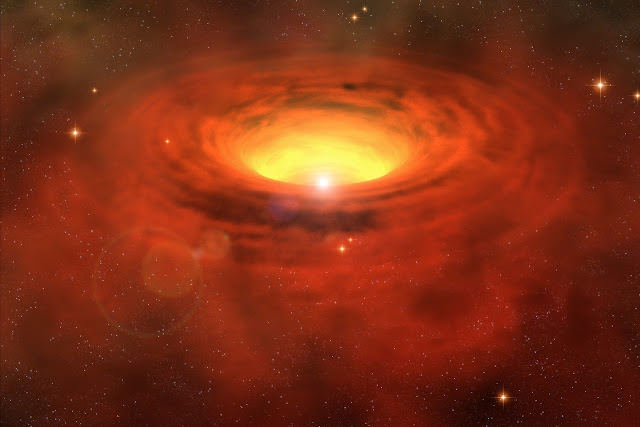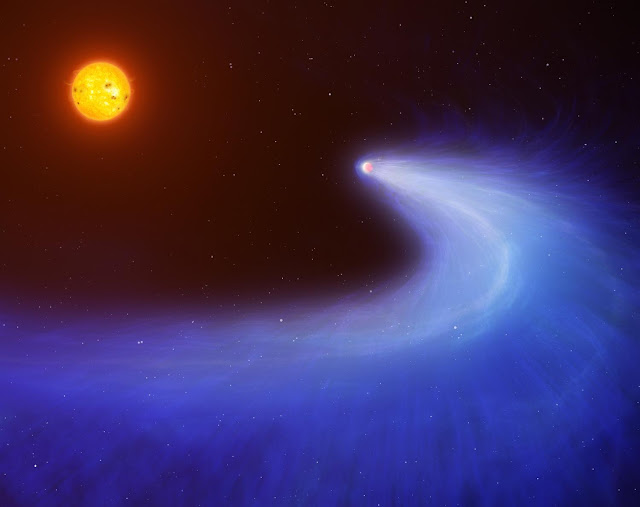Figure 1: Artist’s impression of a habitable planet.
Red dwarf stars are by far the most common stars in the Universe. Observations by NASA’s Kepler space telescope have shown that Earth-sized planets are ubiquitous around red dwarf stars. Red dwarf stars are much smaller and much less luminous than stars like the Sun. For a planet around a red dwarf star to receive as much insolation as Earth gets from the Sun, the planet needs to orbit much closer to the star. As a result, the planet is likely tidally-locked, with a permanent dayside hemisphere and a permanent nightside hemisphere.
If an extraterrestrial civilisation evolved from such a planet or migrated in from elsewhere, it may wish to make better use of the planet’s surface by illuminating the permanent nightside. The most obvious way is to place mirrors in space to illuminate the planet’s dark side. Either a single large mirror could be stationed at the L2 Lagrange point or a fleet of smaller mirrors could be placed into orbit around the planet (Figure 2). From a feasibility standpoint, a fleet of smaller mirrors is less technically challenging than a single large mirror at the L2 Lagrange point.

Figure 2: Schematic illustration of three methods of dark-side illumination (not to scale). Planetary grayscale bands indicate different levels in stellar illumination. In the three cross-sectional drawings, (a) shows a large circular or annular mirror stationed at the L2 Lagrange point, (b) shows multiple small mirrors in circular orbits, (c) shows multiple small mirrors in elliptical orbits designed to maximise the duty cycle of the mirrors.
Illuminating the dark side of a tidally-locked planet with a fleet of orbiting mirrors will warm up the planet’s dark side and lead to a smaller day-night temperature contrast on the planet. This will slow the transfer of heat from the dayside to the nightside, causing the dayside to warm up. However, the mirrors can obscure some of the starlight falling on the planet’s dayside and this can keep the dayside from warming up excessively.
To provide sufficient illumination, a fleet of orbiting mirrors is expected to have a total reflective surface area comparable to the cross-sectional area of the planet. As a result, if the planet were to transit its parent star, the presence of such a fleet of orbiting mirrors could be detected from the unique transit light curve. In order to model and understand such a transit light curve, the fleet of mirrors orbiting the planet can be approximated as a translucent annulus around the planet.
During the initial phases of the transit (i.e. ingress), only the mirrors block starlight, so the light curve decreases relatively gradually. When the planet itself starts to transit, the light curve begins to decrease more steeply. The light curve decreases gradually again when the planet is completely in front of the star and the remaining fleet of mirrors, approximated as a translucent annulus around the planet, blocks more starlight. Once the fleet of mirrors are completely in front of the star, the transit light curve resembles that of a larger planet.
A fleet of orbiting mirrors basically lengthens the transit duration and deepens the transit depth. If the fleet of orbiting mirrors is designed for maximum efficiency such that all the reflected starlight is directed to illuminate the planet’s dark side, then the eclipse duration (i.e. duration where the planet passes behind the star) will be smaller than the transit duration. A fleet of orbiting mirrors around a planet, if present, could be detectable by the James Webb Space Telescope (JWST).
Figure 3: Transit light curves for a planet with 2 Earth radii orbiting an M5 red dwarf star (dashed line: planet alone), the same planet surrounded by a fleet of orbiting mirrors extending to 3 planetary radii (solid line: mirror + planet), and a planet without mirrors but large enough to produce a light curve with the same depth of transit (dotted line: large planet). Korpela, Sallmen & Greene (2015).
Figure 4: Transit light curves that result when a planet with 2 Earth radii, located in the middle of an M5 red dwarf star’s habitable zone, transits in front of the star. In all cases, the planet is surrounded by a fleet of orbiting mirrors extending to 3 planetary radii (solid), 2 planetary radii (dotted) and 10 planetary radii (dashed). Korpela, Sallmen & Greene (2015).
Reference:
Korpela, Sallmen & Greene (2015), “Modeling Indications of Technology in Planetary Transit Light Curves -- Dark-side illumination”, arXiv:1505.07399 [astro-ph.EP]










































